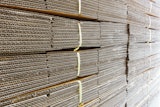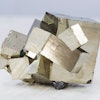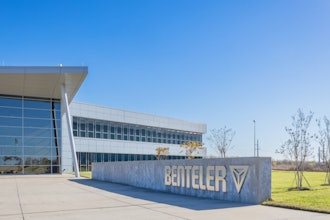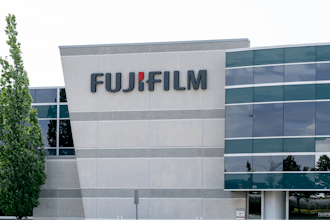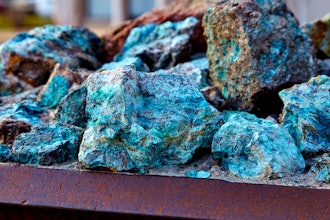One of the most costly expenditures for any manufacturing or industrial facility is caring for the roof. Even roofs that receive regular maintenance may develop leaks before the entire roof must be replaced. However, incorporating a roof maintenance program as part of a facility’s overall building upkeep can prevent small problems from becoming major ones and help pinpoint — and even predict — areas of the roof that may soon need servicing.
A Program At Work
A roof maintenance program should be in writing to help ensure that all tasks are performed on a set timetable. It should list who is responsible for certain roof-related jobs and who is in charge of making sure the entire program is carried out properly.
The essential first step in a roof maintenance program is getting to know the roof through an inspection of roof details, including:
• Copings, cap, counter, and base flashings
• Gravel stops
• Roof edging and fascia
• Condition of pitch pockets and pipe boots at roof penetrations.
For single-ply membrane roofs, the seams should be inspected to make sure there are no voids or openings. For built-in or modified bitumen membrane roofs, look for developing wrinkles, blisters, torn or worn areas, holes, or deterioration. Any of these conditions indicate a roof that needs — or will soon need — attention or repair.
A roofing plan should include these preventive maintenance tasks:
• Recording the condition of the roof (use photos to show changing conditions)
• Removing debris, leaves, or other materials that do not belong on the roof
• Inspecting adjacent walls and mechanical equipment that can affect the roof’s effectiveness
• Examining the roof for the growth of mold and mildew, which can lead to indoor air quality problems within the building and affect roof longevity
• In climates with winter snow, checking to see if certain areas of the roof have more snow buildup than others, noting their location, and removing the snow if necessary to protect the roof.
A roof maintenance program should also incorporate training personnel on emergency roof repair. A facility’s maintenance crews may be forced to handle emergency repairs before a roofing contractor can service the building. However, it is always best to rely on a professional roofing contractor if at all possible. Sending facility personnel to fix a roof can be dangerous and, in some situations, can void a roof’s warranty.
Many times a building leak is not roof-related. Facility personnel should look for other possible leak sources such as plumbing or ventilation systems built into walls and ceilings. The source of the leak may be located far from where the moisture is being detected.
Extending A Roof’s Life Cycle
Because roofs are a costly investment, the ultimate goal of a roof maintenance program is to extend a roof’s life cycle. Some manufacturing facilities are not only incorporating a roof maintenance program to help boost their roof’s life span but are now looking into entirely new ways to extend a roof’s longevity.
One method that is receiving considerable attention is the addition of a Green roof atop an existing roof, according to Jim Lindell, market development associate with GreenGrid, a manufacturer of modular Green roofing systems.
|
Photos, left to right: A Green roof modular system, recently planted. A Green roof and gravel system combined. | |
“Simply put, a Green roof is a roof that is partially or substantially covered with hearty, low-lying plants such as sedums and grasses,” said Lindell. “Typically, it consists of four layers: plant media (vegetation); growth media (soil); a module or drainage layer, depending on the type of Green roof installed; and a covering to protect the existing roof.”
With a modular Green roof system, a nursery or professional landscaping company places plant and soil media into modules and then delivers the modules directly to the facility, where they are placed on top of the roof.
The modules are made from 60 percent post-industrial, recycled, high-molecular-weight polyethylene. They are available in different sizes and shapes and in depths of two-, four- and eight-inches.
Although Green roofs have several benefits — such as reducing energy costs, quieting a facility, and limiting storm water runoff — Lindell said one of the most significant benefits is that they can double the life cycle of an existing roof because they help moderate the roof’s temperature.
“In the heat of summer, a roof can reach temperatures well above 170 degrees Fahrenheit,” he said. “In the cold of winter, it can drop to freezing, even subzero, temperatures. These temperature extremes cause the roof to expand and contract — one of the major factors leading to a roof’s deterioration.”
According to Lindell, with a Green roof system in place, there are fewer temperature swings and the roof stays at a more moderate temperature throughout the year. This consistency helps protect the roof. Additionally, with a Green roof installed, the existing roof is not exposed to harmful ultraviolet rays, which also extends its life cycle.
For North American manufacturing and industrial companies to compete in a global market, they must continue to find new ways to cut costs, streamline operations, and make their facilities as “lean” as possible. Along with analyzing manufacturing and production procedures to find new ways to improve worker productivity and reduce costs, manufacturers should also remember that additional savings can result by just paying closer attention to their facilities.
A roof maintenance program can forestall problems, helping to protect a facility and extend the life of the roof. And new technologies, such as Green roofing systems, can significantly increase a roof’s longevity while providing overall cost savings.
